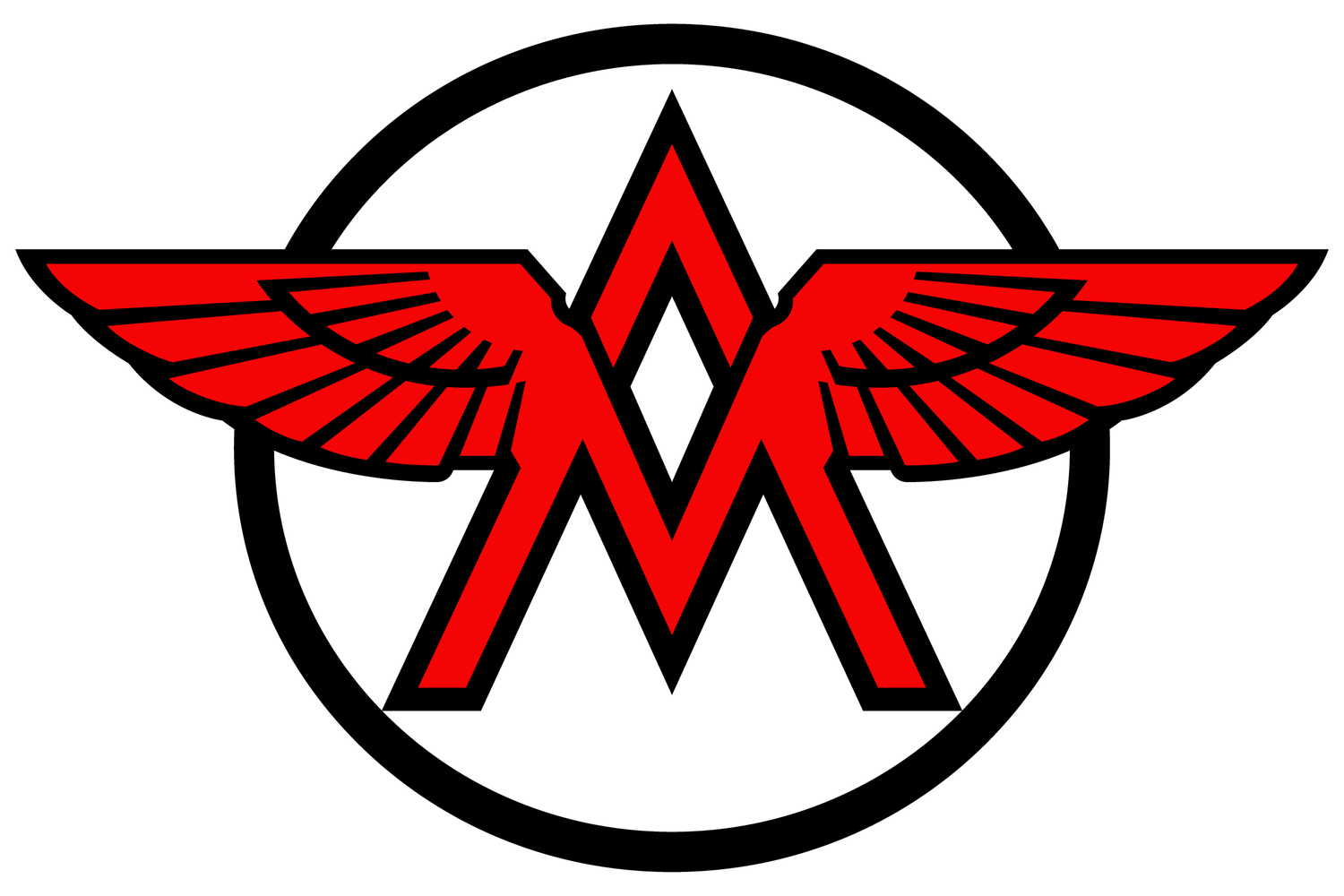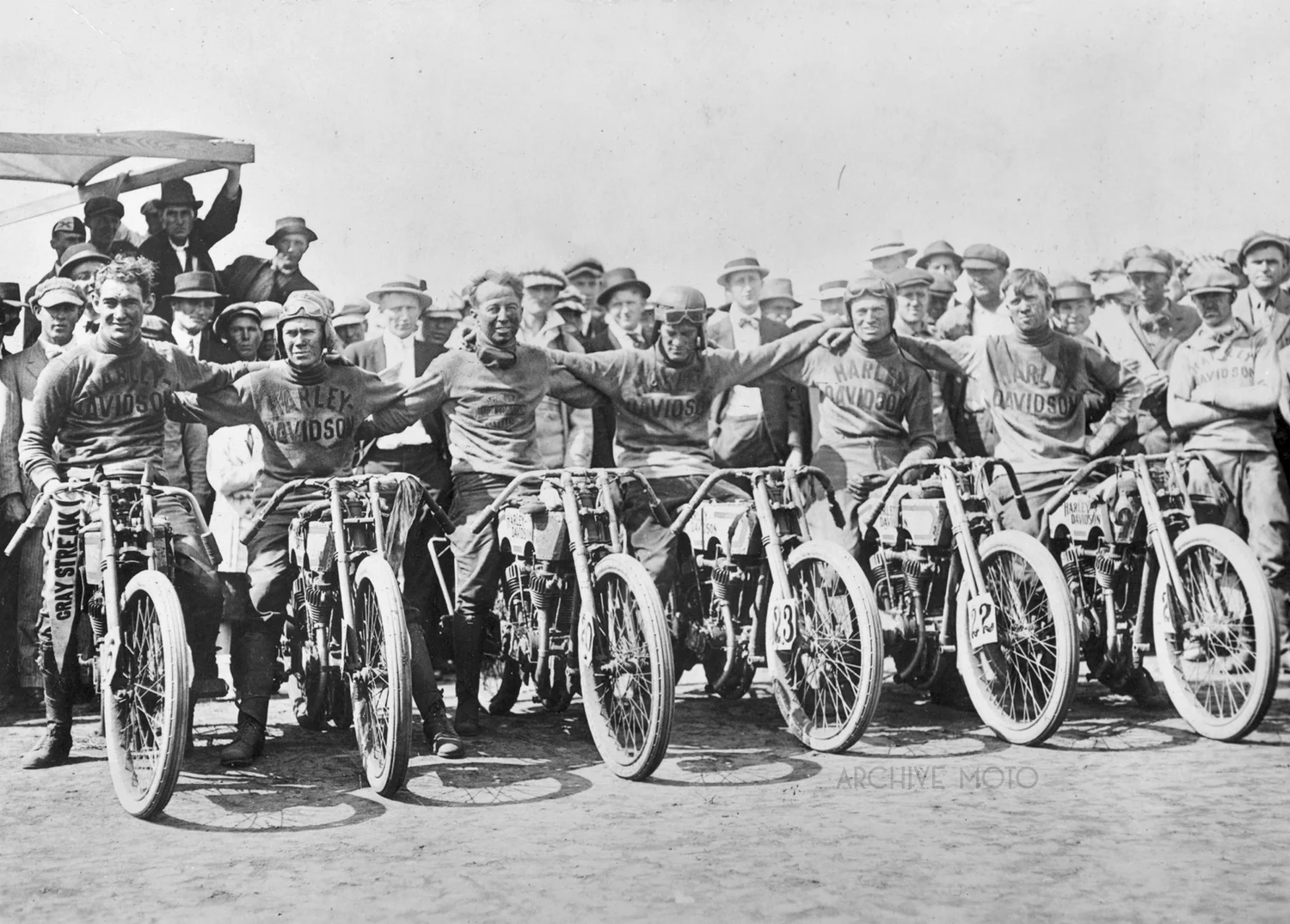Nine of the finest motorcycle racers America has ever produced kicking up the dust at Los Angeles’ Ascot Park on November 30, 1919. This was the beginning of the great rebirth in American motorcycle racing, the years following WWI when the line between risk and reward became razor thin, and top speed was the name of the game. The era of the motordrome, the small circular board tracks which once enraptured America’s enthusiasts had vanished, having given way to enormous board track speedways and the hair raising hornet fights on the dirt mile. This was the age of 8-valves, fast tracks, and homeric stars; these were the glory days of the Harley-Davidson Wrecking Crew.
Still reveling in his victory after becoming the 2-Mile National Champion, having hit 96 mph on the boards of Sheepshead Bay just a few weeks before, Harley-Davidson’s Otto Walker took the top spot at Ascot that day during the 50-Mile America’s All-Star Motorcycle Sweepstakes race, his young teammate and Wrecking Crew team rival Shrimp Burns just behind him in second. As the pack flew by the grandstands, which were still draped in star-spangled banners from the country’s first ever Veterans Day celebration, Walker is easily spotted front and center due to his distinctive crested German aviators helmet, a trophy collected during his own service as an aviation mechanic in France the year before. Not only did 1919 mark the return of professional motorcycle racing in America, but it was the year that Harley-Davidson, determined to stake their claim as America’s greatest motorcycle manufacturer simply dominated at the track, racking up wins, national titles, and new speed records at Marion, Ascot Park, and Sheepshead Bay. A new era of professional motorcycle racing in America had begun, and Harley-Davidson was leading the way.






